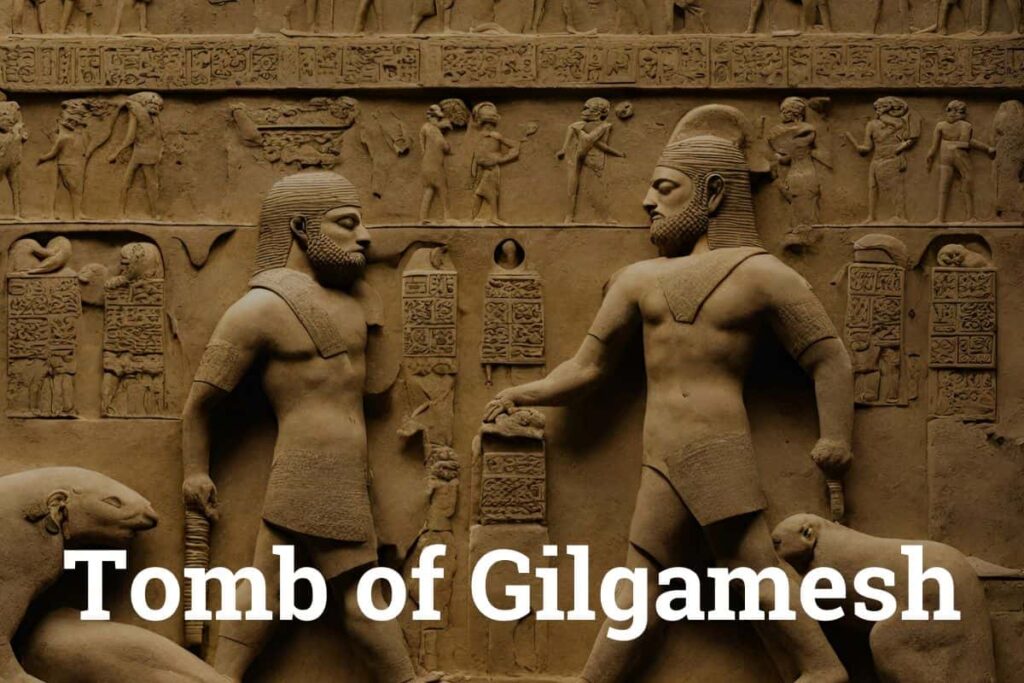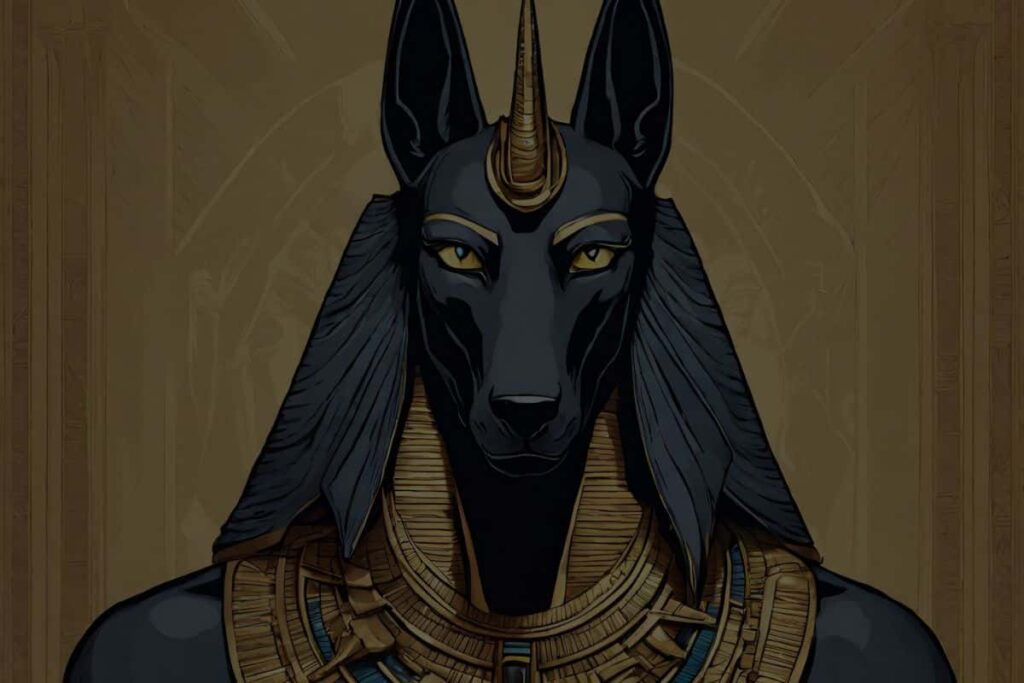Introduction:
The Tomb of Gilgamesh has long been shrouded in mystery, captivating the imaginations of historians, archaeologists, and enthusiasts alike. In this article, we embark on a journey to uncover the secrets hidden within this ancient resting place, exploring the legend of Gilgamesh, the discovery of his tomb.
The Legend of Gilgamesh

Gilgamesh, often referred to as the “King of Heroes,” is a central figure in Sumerian mythology and the protagonist of the Epic of Gilgamesh, one of the oldest known works of literature. This epic poem recounts his adventures, including his quest for immortality and his friendship with Enkidu, a wild man created by the gods. Gilgamesh’s reign over the city-state of Uruk is believed to have occurred around 2700 BCE, during the Early Dynastic Period of Mesopotamia.
Tomb of Gilgamesh Discovery
In the year 2003, an expedition spearheaded by the esteemed archaeologist, Dr. Farouk Al-Rawi made a groundbreaking discovery in the Iraqi region of ancient Sumeria—a tomb believed to belong to none other than Gilgamesh himself. Located near the ancient city of Ur, the tomb was uncovered during excavations conducted as part of a larger archaeological project in the region. The news of the discovery sent shockwaves through the archaeological community, as it promised to shed new light on the life and reign of this legendary king.
Inside the Tomb of Gilgamesh
Upon opening the tomb, researchers were greeted with a wealth of artifacts and relics dating back to the Early Dynastic Period. Among the most notable findings were intricately carved stone tablets inscribed with cuneiform script, the earliest known form of writing. These tablets contained accounts of Gilgamesh’s exploits, offering invaluable insights into the culture, religion, and society of ancient Mesopotamia.
In addition to the tablets, the tomb also contained a trove of personal belongings believed to have belonged to Gilgamesh himself. These included ceremonial weapons, jewelry, and intricately crafted statues depicting the king in various poses of leadership and authority. The discovery of such artifacts provided tangible evidence of Gilgamesh’s existence and reign, confirming his status as a historical figure rather than a purely mythological one.
Tomb of Gilgamesh Mysteries
As experts meticulously examined the contents of the tomb, they sought to unravel the mysteries surrounding Gilgamesh’s life and legacy. Through detailed analysis of the artifacts and inscriptions found within the tomb, researchers were able to piece together a more comprehensive understanding of Gilgamesh’s role in ancient Mesopotamian society.
One of the most significant revelations to emerge from the tomb was the extent of Gilgamesh’s influence as a political and religious leader. Inscriptions on the stone tablets depicted him as a wise and just ruler, revered by his subjects for his leadership and bravery in battle. These accounts helped to dispel some of the myths and misconceptions surrounding Gilgamesh, portraying him as a complex and multifaceted figure rather than a mere archetype of heroism.
Sleeping Gilgamesh – Fact or Fiction?
One enduring mystery surrounding Gilgamesh is the legend that he lies in a state of eternal slumber within his tomb, awaiting the day when he will rise again. While this notion may seem fantastical, some researchers speculate that there could be a kernel of truth to the myth.
According to ancient Mesopotamian belief, the afterlife was a continuation of earthly existence, with the deceased residing in the underworld alongside the gods. It was believed that the soul required a physical body to inhabit in the afterlife, leading to elaborate burial practices designed to preserve the body for eternity. In this context, the idea of Gilgamesh “sleeping” in his tomb may be interpreted as a symbolic representation of his transition to the afterlife, rather than a literal depiction of his state of being.
Historical King of Uruk
Historical evidence suggests that Gilgamesh was indeed a real person. He is widely recognized as the fifth king of Uruk, a powerful city-state in ancient Sumer, located in present-day Iraq. According to historical records, he reigned around 2700 BCE, during the Early Dynastic Period of Mesopotamian history.
The Sumerian King List, a vital ancient manuscript, lists Gilgamesh as the ruler of Uruk, stating that he reigned for 126 years—a clear indication of his legendary status. However, many scholars interpret this lengthy reign as a symbolic representation of his larger-than-life legacy rather than a factual account.
Despite the mythological embellishments, Gilgamesh’s historical existence is widely accepted among scholars. His reign was significant in consolidating power within Uruk, fostering economic prosperity, and leading military campaigns that expanded the influence of the city-state.
As time passed, Gilgamesh’s reputation grew beyond his political and military accomplishments. Tales of his divine ancestry and superhuman feats spread, eventually leading to his deification in Mesopotamian culture. By the time The Epic of Gilgamesh was composed, he had transformed from a historical monarch into a god-like figure whose legend symbolized the struggles and hopes of humanity.
Rediscovery of the Epic
The story of Gilgamesh might have been lost to time had it not been for one of the most remarkable archaeological discoveries of the 19th century. In 1849, British archaeologist Austen Henry Layard led an expedition to the ancient city of Nineveh, the site of the Assyrian capital in modern-day Iraq. During his excavations, Layard and his team uncovered the ruins of the great library of Ashurbanipal, one of the most significant repositories of knowledge from the ancient world.
Among the thousands of clay tablets retrieved from the site were the fragments of The Epic of Gilgamesh, written in Akkadian cuneiform script. The version discovered was the Standard Babylonian edition, dating back to around 1200 BCE, although older Sumerian versions existed long before this.
Layard’s mission, initially funded by European institutions and motivated by a desire to uncover physical evidence supporting the Bible’s historical narratives, unexpectedly revealed a literary treasure trove predating biblical texts. These discoveries showed that many biblical stories—such as the Great Flood—had parallels in far older Sumerian and Akkadian myths, including The Epic of Gilgamesh.
The rediscovery of the epic was groundbreaking, forever altering our understanding of ancient literature and human civilization. What was once thought to be the oldest religious and historical text—the Bible—was now understood as part of a broader literary and mythological tradition that began in Sumer thousands of years earlier.
Was Gilgamesh a Giant?

Another aspect of Gilgamesh’s legend that has captured the public’s imagination is the idea that he was a giant of immense stature and strength. This perception is largely based on descriptions of Gilgamesh found in ancient texts, which often portray him as larger than life in both physical and metaphorical terms.
However, modern scholarship suggests that Gilgamesh was likely of average height for his time, with his perceived “giant” status being more symbolic than literal. The exaggerated portrayals of Gilgamesh as a towering figure may have served to emphasize his heroic qualities and divine lineage, rather than his actual physical appearance.
Conclusion:
The Tomb of Gilgamesh stands as a testament to the enduring legacy of one of history’s most legendary figures. As researchers continue to unlock its secrets, we gain a deeper understanding of the ancient world and the myths and truths that define it.
FAQs:
Ques- Is Gilgamesh a real person?
Ans- Yes, Gilgamesh is believed to have been a real historical figure, although the extent to which the epic poem accurately reflects his life remains a subject of debate among scholars.
Ques- How tall was Gilgamesh?
Ans- There is no definitive answer to this question, as the height of Gilgamesh is often exaggerated in mythological accounts. However, he was likely of average height for his time.
Ques- Where is Gilgamesh?
Ans- Gilgamesh ruled over the city-state of Uruk, located in present-day Iraq. His tomb was discovered in the vicinity of ancient Sumeria, in what is now modern-day Iraq.
Ques- Who was the scientist finally open the tomb of Gilgamesh?
Ans- The team of archaeologists responsible for the discovery and opening of Gilgamesh’s tomb was led by Dr. Farouk Al-Rawi, a renowned expert in Mesopotamian archaeology.



